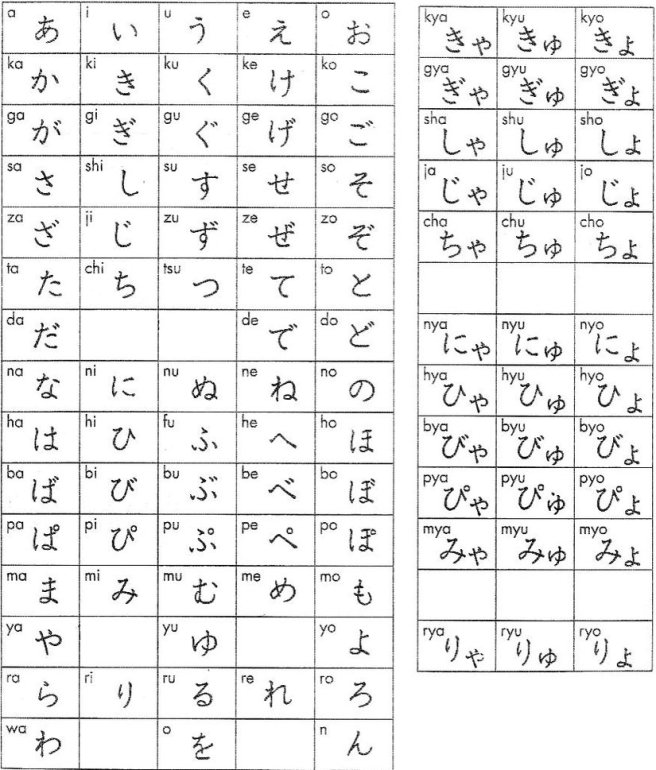In lesson 1, basic Hiragana was presented. In this lesson, we will look at the final details which will cover the whole Hiragana and prepare you to read full Japanese Hiragana text. Below are the functional marks when added to some of the basic Hiragana in Lesson 1.
“: When this mark is added to the K,S,T,H consonant, the reading of the Hiragana changes to G,Z,D,B respectively. For example,
か(ka) → が(ga), さ(sa) → ざ(za), た(ta) → だ(da), は(ha) → ば(ba)
It does not not change for others.
°: Similar to the ” functional mark, ° changes the Hiragana with H consonant to P. For example,
は(ha) → ぱ(pa)
つ: The つ can be written in a subscript (half size). When it is written as a subscript the reading of the word changes when the つ(tsu) is not read but the Hiragana next to the subscript つ is emphasized. For example, がっこう is read as gakkou which means school and not read as gatsukou.
や、ゆ、よ: The や、ゆ、よ Hiragan can also be written in a subscript (half size) following Hiragana with the consonant K, S, T, N, H, M, R, G, B, P. For example,
か(ga) → ぎゃ(gya).
The table below is a table of the whole Hiragana and summary of Lesson 1 to Lesson 3. Please take your time to familiarize and understand the table.

As usual, some exercise for you to practice. Translate the Hiragana words below in the comments section.
こんにちは。にほんごはたのしいです。べんきょうしたら、にほんにいきたい!いっしょにがんばりましょう!
The text is translated to “Good afternoon (こんにちは). Japanese (にほんご) is fun (たのしい). After learning Japanese (べんきょうしたら), I would like to go (いきたい) to Japan (にほん). Let’s work hard (がんばりましょう) together (いっしょ)!
In the next lesson we will go quickly through Katana which is similar to Hiragana.
Hey, good work!
べんきょうしたら、にほんにいきたい!
I think you got this one wrong ~たら is a conditional so the sentence is closer to “if I learn, I want to go to Japan!” which sounds a bit strange in both English and Japanese in my ears. I’m not so good yet myself, so I’m not entirely sure how you’d say, what you really want to say… maybe use ~てから ( http://www.tanos.co.uk/jlpt/skills/grammar/sentences/?grammarid=574 )
I feel like べんきょう on it’s own doesn’t work that well either (I’m not entirely sure, but if you said べんきょうしてから, ~ to me it would sound more like “I’ll learn some Japanese today, and afterwards I’ll do ~” so it might work in a context of “After studying, I’ll go shopping” but not really in the sense of “After learning Japanese (=After getting good at Japanese), I’ll do ~” Hmmm, maybe that could actually work out… “If I get good at Japanese, I want to go to Japan にほんごがじょうずになったら、にほんへいきたい。 uuuurgh sounds off as well (and I feel like I’m bad with particles) but maybe you could go over to the learnJapanese reddit and ask in the shitsumonday corner or something :S
LikeLike
Just noticed you probably have a better grasp of the language than me, so maybe my first impression of the sentence is entirely wrong… but uh it just seemed of to me, is what I wanted to say…
LikeLike
Hi sumsum,
Thanks for your comment. You may be right. I will try look it up as well and change the sentence. It was written for Hiragana practice and I didn’t put much thought in the grammar. Should have done that.
Opinions are always welcome in any posts 🙂
LikeLike